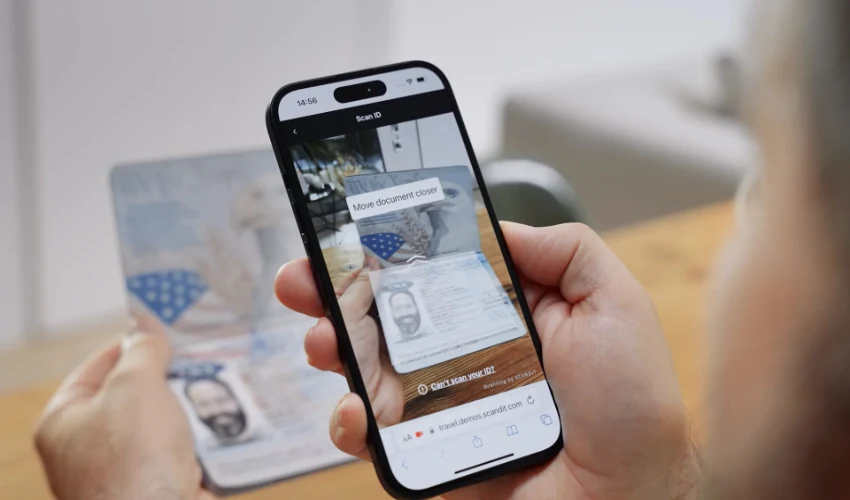In an increasingly digital world, scannable IDs are revolutionizing the way we interact with businesses, services, and even each other. From quick check-ins to seamless transactions, these digital identification tools have become an essential part of our daily routines. Let’s explore some of the most innovative uses of scannable IDs and how they are transforming everyday life.
- Faster and More Secure Access Control
Scannable IDs are widely used for access control in workplaces, schools, and residential buildings. Employees can use QR codes or NFC-enabled badges to enter secured areas without the need for physical keys. This enhances security while reducing the risks associated with lost or stolen access cards.
- Efficient Public Transportation
Many cities worldwide have adopted Scannable ID systems for public transportation. Commuters can use digital ID cards or mobile QR codes to board buses, trains, and subways. This not only speeds up the boarding process but also reduces the need for cash transactions, making public transport more convenient and accessible.
- Streamlined Event Check-ins
Concerts, conferences, and sports events increasingly rely on scannable IDs for seamless entry. Attendees receive a unique QR code on their ticket, which is quickly scanned at entry points, eliminating long queues and preventing fraud.
- Contactless Payments
Digital wallets and payment apps now integrate scannable IDs to facilitate secure transactions. Users can scan a QR code at checkout counters, vending machines, or even street vendors to complete purchases without handling cash or cards.
- Healthcare and Patient Identification
Hospitals and clinics use scannable ID wristbands to track patients, retrieve medical records, and ensure accurate treatment administration. This reduces the chances of errors and improves patient safety.
- Smart Shopping Experiences
Retailers are incorporating scannable IDs into their customer experience strategies. Shoppers can scan QR codes to receive personalized discounts, product information, or loyalty points, making the shopping experience more engaging and rewarding.
- Enhanced Library Systems
Public and university libraries use scannable Idbook cards for book checkouts and returns. This system minimizes paperwork and allows users to manage their borrowed items online efficiently.
- Seamless Hotel Check-ins
Hotels are adopting digital ID check-in systems, allowing guests to scan their mobile IDs at kiosks or use NFC-enabled cards to access their rooms. This improves efficiency and enhances customer satisfaction by reducing wait times at the reception desk.
- Digital Identity Verification
Online services, including banking and social media platforms, require identity verification for security purposes. Scannable IDs allow users to verify their credentials quickly, preventing identity theft and fraud.
- Educational Institutions and Student IDs
Universities and schools issue scannable student IDs that grant access to buildings, libraries, and meal plans. These IDs also facilitate attendance tracking and secure entry into examination halls.
- Smart Gym Memberships
Fitness centers and gyms use scannable ID cards to monitor membership usage, grant access to workout facilities, and track attendance. This enhances security and ensures only authorized members can use the services.
- Easier Car Rentals and Ride-Sharing
Car rental companies and ride-sharing services use scannable IDs to verify drivers and passengers quickly. This improves security, reduces fraud, and speeds up the process of renting or hailing a vehicle.
- Pet Identification and Tracking
Pet owners can attach QR-coded tags to their pets’ collars, allowing anyone who finds a lost pet to scan the tag and retrieve contact information. This increases the chances of lost pets being returned home safely.
- Effortless Workplace Attendance Tracking
Companies use scannable IDs to track employee attendance, eliminating manual sign-ins. This increases efficiency and ensures accurate payroll calculations.
- Smart Home Integration
Home automation systems integrate scannable IDs to control access to smart locks, adjust lighting, and even manage energy usage. This enhances convenience and security for homeowners.
- Efficient Package Deliveries
Delivery services use scannable IDs to track parcels, ensuring accurate deliveries. Customers can scan their package QR codes to monitor shipment status in real-time.
- Personalized Travel Experiences
Airlines and travel agencies use scannable IDs for check-ins, boarding passes, and baggage tracking. Travelers can access real-time updates and manage their itineraries more efficiently.
- Secure Digital Voting Systems
In some regions, digital voting systems incorporate scannable IDs to authenticate voters and ensure election integrity. This reduces voter fraud and enhances the security of the democratic process.
- Interactive Tourist Attractions
Museums, zoos, and historical sites use scannable IDs to provide visitors with interactive experiences. By scanning a QR code, visitors can access multimedia content, guided tours, and additional information about exhibits.
- Safe and Secure Online Dating
Dating apps are incorporating scannable IDs to verify user identities, ensuring a safer dating experience by reducing catfishing and fraudulent accounts.
Conclusion
Scannable IDs are reshaping the way we interact with the world. From security and convenience to efficiency and engagement, these digital identification tools are making everyday life more streamlined and accessible. As technology continues to evolve, we can expect even more innovative applications of scannable IDs in the near future.
